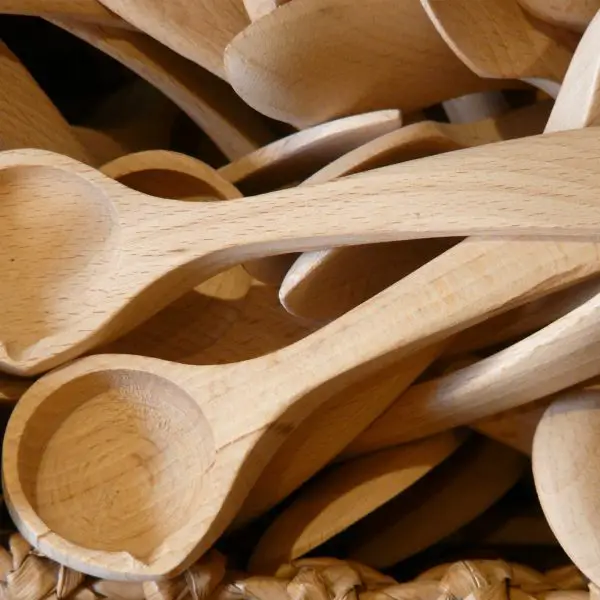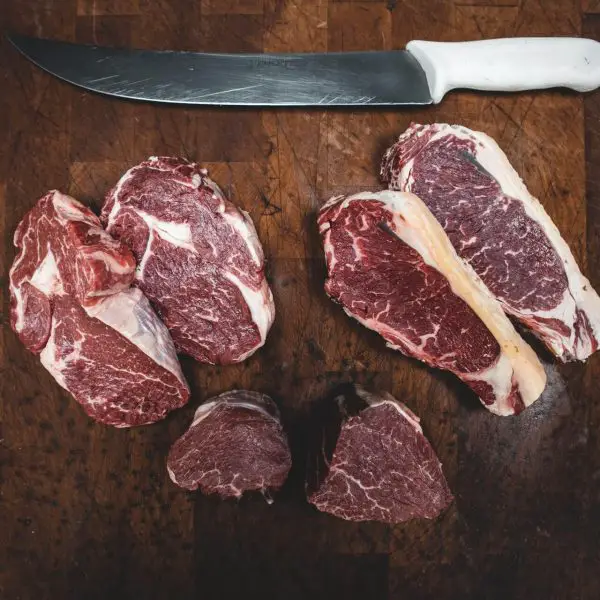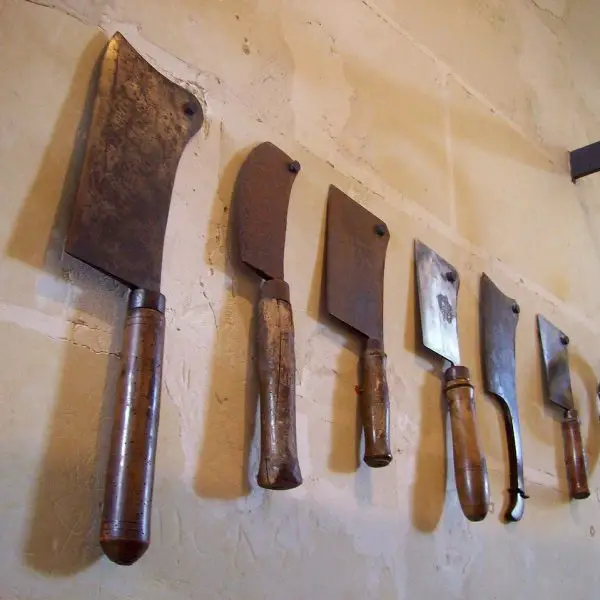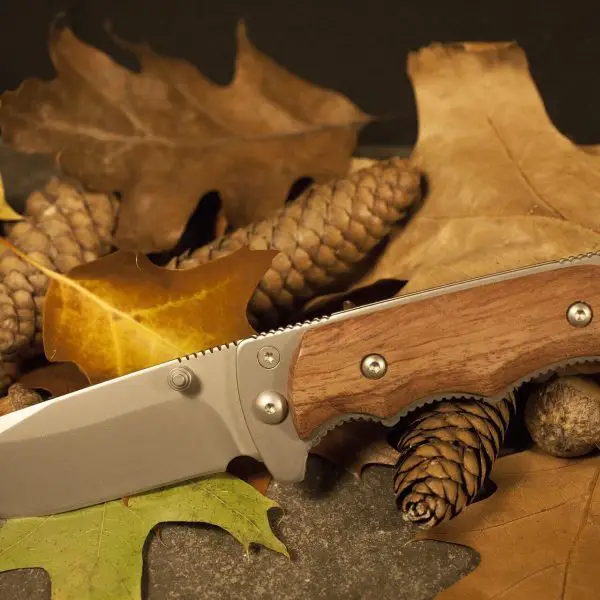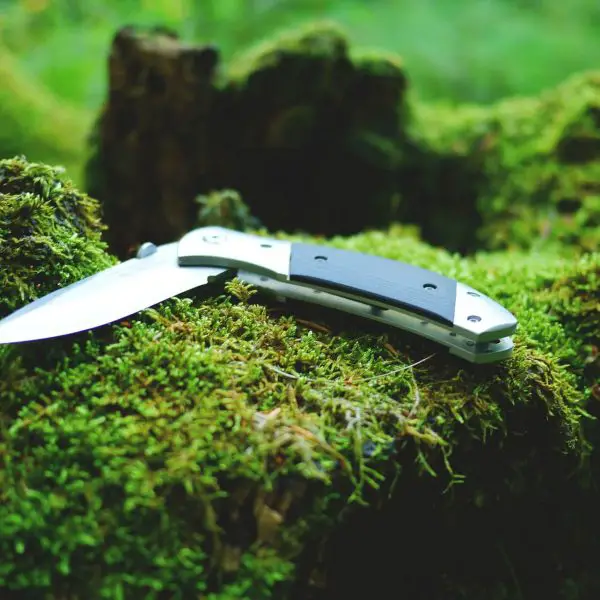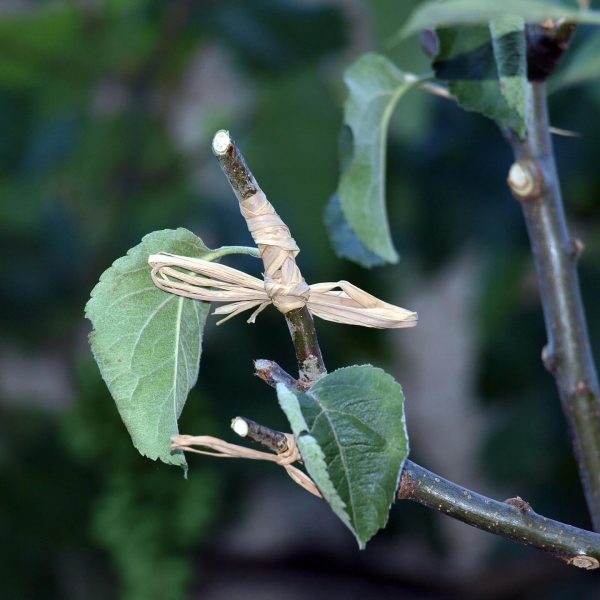Dull blades not only feel awful and are frustrating to cut with but are also very dangerous.
A dull blade shouldn’t be ignored or solved by changing knives. But what should you do then?
In this article, we will explain what sharpening and honing is as well as how often, and how to actually do it.
How To Sharpen Your Knife
Regular use will dull any and every knife, it doesn’t matter what type it is, how old, or how much you paid. This is a problems because dull knives can slip and cut your fingers.
There are 3 ways to sharpen a knife: rod, sharpener, and wet stone.
A rod will straighten your knife out, making it sharp again. If your knife is very, very dull, you’ll need a small knife sharpener to remove bits of steel which will make it sharp again. And if it’s severely dulled, you’ll need to use a wet stone. Watch this video below and follow these simple steps, along with recommended knife sharpeners and make your knives sharp again.
How To Sharpen Your Knife With A Rod
For knives that aren’t super dull and just need to be straightened out.
- Use a knife sharpener rod to gently bend your knife’s blade to be straighter, which will make it sharp again
- Place point of rod on a folded towel on a counter top
- Using a 20 degree angle, hone the heel of the knife to the tip of the knife across the rod
- You only need to do this 1-way motion a few times on each side of the knife
- ✔️ DIAMOND ELECTOPLATING: State-of-the-art manufacturing for precision Kitchen, Home or Hunting blade sharpening. Ensures efficient and sharp sharpening of dull knives and tools.
Last update on 2024-07-26 / Affiliate links / Images from Amazon Product Advertising API
How To Sharpen Your Knife With a Knife Sharpener
A knife sharpener will remove bits of steel from your knife. This works for very dull knives that need more than just to be straightened out with a rod sharpener, but not so dull they need a wet stone.
- Start on the coarse side then move the knife through the fine side
- Place on a sturdy counter top and pull your knife from heel to tip a few times on the coarse side, then on the fine side.
- Versatile 4-Stage Knife Sharpener: Experience the ultimate sharpening solution for a wide range of blades including stainless steel, hard steel, kitchen knives, large knives, pocket knives, and scissors. Our knife sharpening tools consist of four essential parts, meticulously designed to meet all your sharpening needs.
Last update on 2024-07-27 / Affiliate links / Images from Amazon Product Advertising API
How To Sharpen Your Knife With a Wet Stone
Use a wet stone for severely dull knives or knives that aren’t getting sharp enough with the other rod or sharpener.
- Soak the wet stone in water until you don’t see any more bubbles
- Start with the coarse side and using a 20 degree angle, hone your knife across the wet stone
- It should be a gliding motion from heel to tip of knife while applying even pressure
- Keep your wet stone very wet
- Only hone the knife a few times on each side
- 【Complete Knife Sharpening Stone Kit】You don't need to be a Pro to sharpen your blades, all you need is the right tools & technique. All the sharpening tools you need are here, one affordable set for you: 400/1000 & 3000/8000 grit whetstone; Coarse flattening stone; Non-Slip Bamboo base; Knife sharpening angle guide; Leather strop, a simple instruction manual about how to use and what does every component do.
Last update on 2024-07-27 / Affiliate links / Images from Amazon Product Advertising API
Once you’ve sharpened your knife, to the ‘tomato test’ to make sure each side is evenly sharpened. When you slice into the tomato, you should see quick and even cuts happening from both sides of the knife.
What Happens When You Use Your Knife
First, we need to look at what happens when we frequently use our knives to understand when and how they need to be sharpened.
With moderate use, a knife’s edge gets bent or gets out of shape and doesn’t point at the right angle any more. This doesn’t mean that the edge isn’t sharp and should be sharpened.
It means that the blade still holds its edge but just isn’t facing the food when you cut with it. The blade’s sharpness is most likely intact, and actually, the blade’s angle is what is preventing you from making a smooth cut.
When this happens, sharpening isn’t required. Honing is the process that will get your edge back into shape.
Honing is most frequently done with a honing steel rod. This process is very often confused with the actual sharpening of the knife.
When you pass the knife through honing steel, all you’re doing is flattening the edge and getting it back into the right shape or angle. You are not actually making the edge sharper or changing its size to reform the edge.
So What Is Sharpening Then?

Sharpening is the actual removal of the old dull edge. It is the process of grinding off the side of the blade to reform the cutting edge. When you hone the edge, you’re not altering the size of the blade and removing anything from it.
Every time you sharpen the blade of your knife it becomes smaller since you are removing the knife material. That’s why honing can be done as much and as frequently as you want, while you should be more vary how often you sharpen your knives.
When To Sharpen Your Knives
A good indicator that sharpening is required is when you see that honing steel doesn’t improve the performance of the cutting edge. It gets it back into shape, but the actual blade is still dull.
With moderate to frequent use of the knife, you can expect the blade to dull in 6 to 12 months.
When you notice that the edge is actually dull, it’s time to get your knives sharpened. But how should sharpen them?
Well, sharpening isn’t as easy as it sounds. The process of sharpening with a wet stone, for example, requires experience.
Last update on 2024-07-26 / Affiliate links / Images from Amazon Product Advertising API
You have to be careful not to over sharpen the knives or sharpen them at the wrong angle. If you do so, you’re not only getting an edge that isn’t sharp, but you also reduce the life span of your knife.
If you aren’t too keen on learning to properly sharpen your knife, your best bet is to leave the sharpening to a professional. That way, you won’t have to worry about the sharpness of your knives and most likely won’t have to sharpen them as frequently.
How To Prevent Premature Dulling Of The Edge
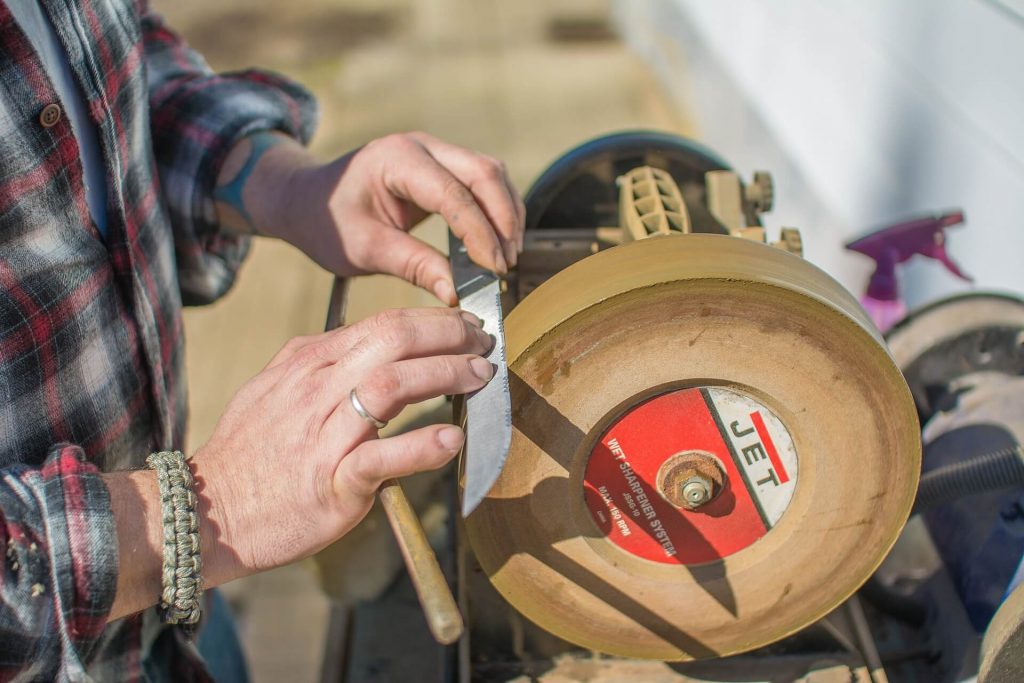
Many people believe that a wrong cutting technique can be a cause of frequent dulling of the edge. That most likely isn’t the case since most of the damage done to the edge of a knife comes from bad cleaning, washing, and storing practices.
If you want to save money and visit the professional sharpeners less frequently, you need to properly store and wash your knives after use.
Cleaning
A chef’s knife should never be washed in the dishwashing machine, even if the manufacturer says it is safe to do so. The chemicals and the high temperatures in dishwashers can dramatically reduce the life span of your knife.
Instead, you should only hand wash your chef’s knives using soap and hot water. After cleaning, a knife should be thoroughly cleaned and stored completely dry.
Storage
Storing your knife properly is of utmost importance for perseverance. A knife is supposed to be stored in a proper, sturdy knife block where the edge will rest undisturbed.
Storing your knives with other utensils can seriously damage the blade and make it unusable.
If you don’t have one, invest in a knife block. It is a wise investment for it will save you a lot of money and time in the long run.
Bonus Tips
To preserve your knife, you should use food-grade knife oil or lubricant. The oil will prevent the blade from rust, corrosion, and will make the performance of the blade better.
- NATURAL & SAFE: Our oil is composed only of 100% natural food-safe ingredients to provide worry-free use.
Last update on 2024-07-26 / Affiliate links / Images from Amazon Product Advertising API
Another way of maintaining your knife’s sharpness is using a self-sharpening knife set.
These knife sets come with built-in ceramic sharpeners specially designed for honing your knives when you take them out or put them back into the knife block.
Last update on 2024-07-26 / Affiliate links / Images from Amazon Product Advertising API
Make sure only to use the knives you got with the self-sharpening block since they are designed for that particular block. If you use other knives on the block, you may damage them since they aren’t at the same angle.
Conclusion
Knives have to be sharpened once in a while to preserve them and make them safe to use.
Make sure to know when to sharpen them using the information from this article, and you will save yourself money and time.

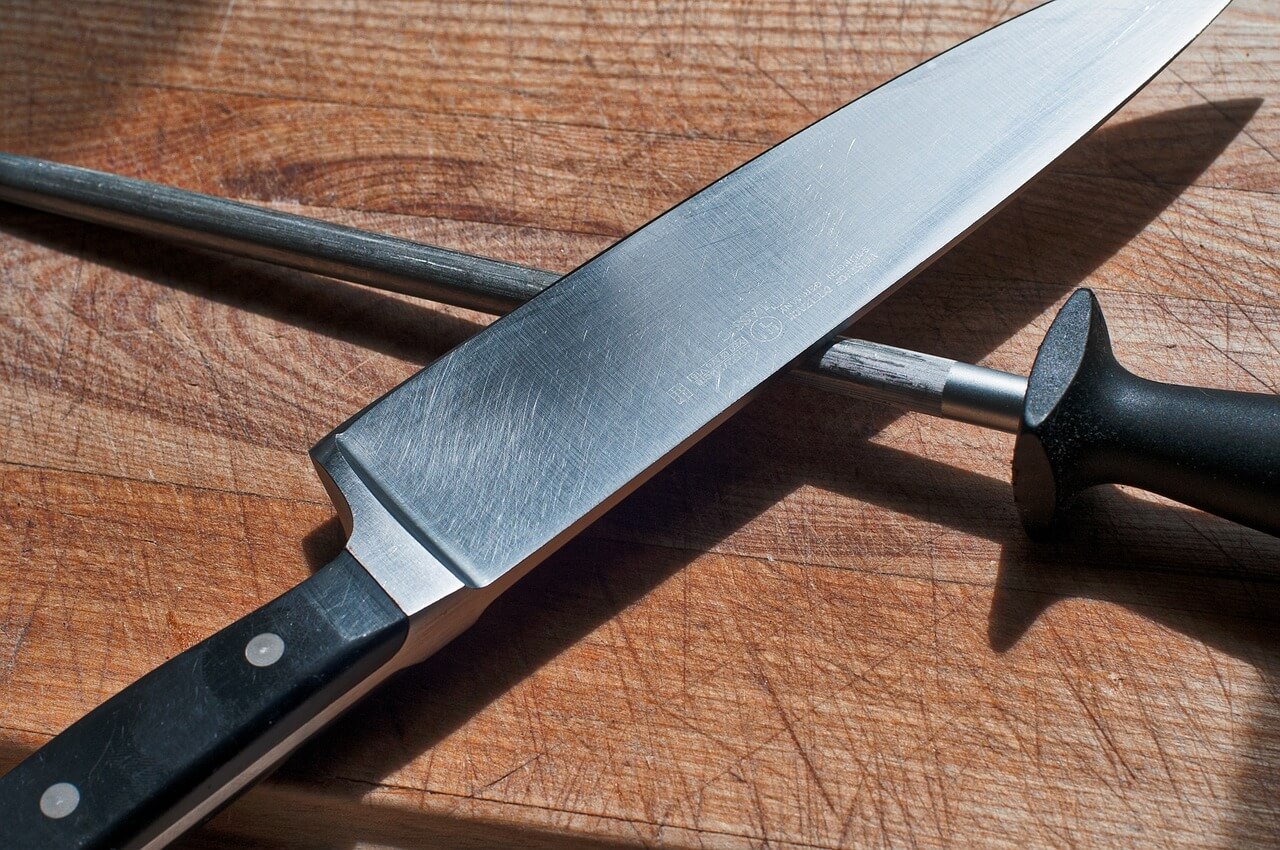

![Longzon 4-in-1 Knife Sharpener [4 stage] with a Pair of Cut-Resistant Glove, Original Premium Polish Blades, Best Kitchen Knife Sharpener Really Works for Fruit Knife and Steel Knives, Scissors.](https://m.media-amazon.com/images/I/41ZEyGV5cEL._SL160_.jpg)



